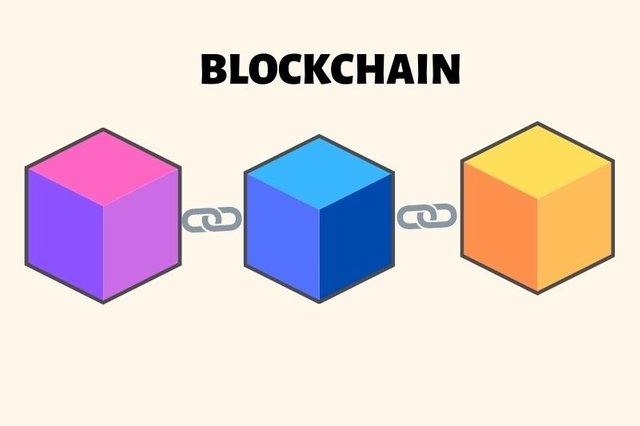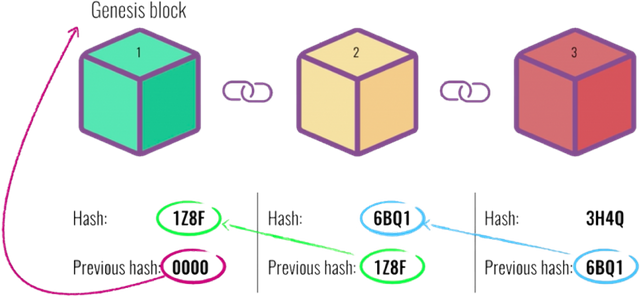Steemit Crypto Academy Season 3 Week 2. The Genesis Block: The Beginning of the Beginning - By Professor @awesononso. Homework task - by @pangoli
Hello guys...
I'm really happy to be part of this week's academy lectures. The classroom experience with Professor @awesononso has been really insightful.
Thus far, I have gained a deeper knowledge of the mechanics underlying a Blockchain formation from the genesis block. This knowledge has cleared out the difficulty I would have faced in understanding several other concepts, because this forms the foundation that makes understanding other concepts relatively easier.
So, when next we go hanging out with friends, we ain't talking like noobs any more...
With the knowledge gleaned from the class, I have used my understanding to solve the homework task. I'm certain you'll get value as you read.
Q1. What is the Genesis Block of a Blockchain?
Before we do a dive into understanding what the Genesis Block is, let's do a refresher on some terms that will help us understand better.
What is a block?
.jpeg)
Image source
A block is the smallest unit of a blockchain. It is a unit of records containing transactional data of a cryptocurrency, done within a particular time frame, and subject to a cryptographic validation process - mining - before being added to a Blockchain.
Apart from the block termed "Genesis block", a typical block may include:
- Records of some or all recent transactions on the network
- A reference to the block that preceded the present block
- The nonce value (for Proof of Work blockchains)
What is a Blockchain?
Consider building a house as the process of creating a blockchain. Each brick is cemented on top of another as tiny fragments making up the overall building. And as they get stacked, the desired specifications - height, shape, etc.- of the building are attained. These fixated blocks, once dried and hardened, cannot be easily mutilated without affecting the whole structure.
The above analogy attempts an explanation of the Blockchain as well. A Blockchain is simply a chronological chain of blocks, securely linked to each other through a process called cryptography, and distributed to all participants on a network.

Image source
Put differently, a Blockchain could be described as a series of records, that are connected to each other using complex hashing functions, and are held by a distributed network of computers who unanimously confirm the validity of transactions on the network.
What is the Genesis Block of a blockchain
.jpg)
Image source: My own work
"Genesis" is a word frequently used in some religious circles to connote the beginning. It is not coincidental that it is also the first book of the Bible, which details what Christians believe to be the creation story.
Although there are some theories making rounds on the media that the Bitcoin source code contains some extracts from the book of Genesis, the reason behind the claim is yet to be found out. Gladly, our scope for this assignment didn't demand us to uncover any mysteries around bitcoin. So, let's get introduced to the Genesis Block, shall we?

Image source
The Genesis Block, as the name implies, refers to the very first block to be validated on a Blockchain. This block becomes the foundation on which every subsequent block is built. It is often characterized by a zero block height, a previous hash value of zero, and an empty transactional record.
By definition, Investopedia explains the Genesis Block as the name given to the first block a cryptocurrency, such as Bitcoin, ever mined.
The genesis block is, in fact, the first-ever block to be mined in a Blockchain sequence. Other blocks get layered on this genesis block and are linked together through a process called cryptography, with each block containing some historical information about the other. These layers and the embedded history of each sequence are what make a blockchain-based cryptocurrency secure.
Depending on the particular Blockchain, the Genesis block can be termed block (0) or **block (1). For instance, Bitcoin's Genesis block is called block (0), while STEEM'S Genesis block is called block(1).
Q2. Bitcoin Genesis Block and its significance.
Bitcoin Genesis Block
N/B: Bitcoin with an uppercase "B" is usually used to connote the blockchain that powers the bitcoin cryptocurrency - with the lowercase "b."
The Bitcoin Genesis Block stands out as the most significant block in the history of Blockchain and Cryptocurrencies. The reason for this is because it became the first practical case for a concept that had been in oblivion for a good number of years. Several projects had tried to implement a distributed ledger technology to tackle the douple-spend problem, just like Bitcoin; but Bitcoin stood out in the pack.
The formation of the Bitcoin Genesis block became the foundation on which every other block, and some other Blockchains, can trace their ancestry. The Bitcoin Genesis Block marked the beginning of what we have come to call a crypto revolution.
Bitcoin's Genesis block, which is also called Block (0), was the first ever Bitcoin block to be mined; after which, every additional block goes through a validation process called Proof of Work (POW) before being added to the chain.
Usually, bitcoins get created in the process of mining and is rewarded to the miner who solved the POW. However, in January 2009, the genesis block of Bitcoin created the first bitcoins; and due to the specific code written for Bitcoin's Genesis Block by the pseudonymous creator - SATOSHI NAKAMOTO, these first coins could not be spent.
According to investopedia, the Genesis block's transactions are not considered real transactions by the original bitcoin client.
This situation riddled the early days of bitcoin with so many mysteries as regarding why the creator made the first coins non-tradable. However, It can be casually said that Satoshi Nakamoto made the coins unavailable for trade because the transaction that brought them to existence did not fulfil a POW consensus. There were no real transactions in the Genesis block, so nothing was validated; hence, rewards are not worthy of spending.
A Secret Message?
Bitcoin's Genesis block got mined on a date that coincides with the release date of a London news article with the headline ‘’Chancellor on brink of second bailout for banks.’’ With the news article headline -"The Times 03/Jan/2009 Chancellor on brink of second bailout for banks"- embedded in the Bitcoin Genesis block's source code, there was an outbreak of theories claiming that SATOSHI 's reference to the article in the Genesis Block's code gave off hints as to how Bitcoin is different from the traditional financial system that needed government bailouts during the 2008 financial crisis.
Some of these theories have gone as far as saying that the news headline prompted Satoshi Nakamoto to onboard Bitcoin in the public domain. In essence, Bitcoin emerged to save the world from a decaying Financial system.
SIGNIFICANCE OF BITCOIN'S GENESIS BLOCK
The bitcoin genesis block is significant in many ways. Some of them are stated below
First POW Blockchain
The Bitcoin's genesis block became the first operational distributed ledger technology with a Proof of Work consensus algorithm to keep its network secured and tamper proof. It onboarded the crypto revolution which has seen the rise of several other projects taking inspiration and improving on what Bitcoin had built.
Typical block components
The Genesis block outlined the key components of a typical block -Block header, hash, timestamp, nonce, rewards, transaction record - and defined what should be the components of every other block.
It created the first cryptocurrency
Bitcoin today remains the mother of every other Cryptocurrency. Thanks to the Genesis block which produced the first 50 bitcoins (BTC), proving the authenticity and existence of Cryptocurrencies.
Solving the double-spend problem
One of the key issues of the traditional financial system was that of double spending. Bitcoin proposed a solution to this problem, and with every subsequent layer of block stacked on the Genesis block, Bitcoin has proven faithful to the proposed course. This solution is most especially powered by the consensus process of validation which combines machine efforts through solving complex mathematical problems; and human efforts of Bitcoin miner's to double-check the network before validating transactions.
No cheating the system
The genesis block detailed the process of validating transactions, such that, no other block of transaction is picked up until the previous is verified. And once a block is verified, there is no way of tampering with it. This coherent process has helped curb the possibility of anyone ever cheating the system without being found out.
Elimination of the middleman
The creation of Bitcoin's Genesis block proved the possibility of digital transactions taking place without the involvement of a third party - the middleman.
Q3. Locate the Steem Genesis Block
The process of locating Steem's own Genesis block, which is known as block (1) on the STEEM blockchain, is detailed in following steps:
Step 1
%20(2).jpg)
Image source: My own work
Visit the STEEM block explorer website
and click on the sign-in button on the top right corner of the navigation bar.
Step 2
.jpg)
Image source: My own work
Fill the resulting login form with your posting key and username, then proceed to log in.
Step 3
.jpg)
Image source: My own work
After a successful log in, Click on the Block explorer button as shown in the image.
Step 4
.jpg) Image source: My own work
Image source: My own work A prompt as shown in the picture above will pop-up, key in the value of "1" in the space labelled ". This means that you want to explore the STEEM genesis block, which is Block (1).
Step 5
.jpg)
Image source: My own work
The result from Step 5 will be as shown in the image above, a display of the STEEM genesis block and its components. One of the obvious things as earlier explained about the Genesis block is that its previous hash value is zero; indicating that there was no other block in existence before it.
Further findings
.jpg)
Image source: My own work
A closer observation of the information in the STEEM's genesis block reveals that the first mining on the STEEM blockchain took place on the 24th day of March, 2016, by an account bearing @initminer as its username.
.jpg)
Image source: My own work
Viewing the profile of STEEM's pioneer validator left me with some open questions. How could he have been active for the last time in 1970 to mine the genesis block in 2016? Well, this might just be the next mystery to unravel.
Conclusion
The beginning of anything is crucial to the outlook of its sustainable lifetime. For blockchains, the Genesis Block sets the tone for what will later culminate into a cryptographically secure, immutable, and distributed chain of blocks containing the transactional data of a cryptocurrency.
With this consideration, the Genesis block, irrespective of the name assigned to it by its host Blockchain, plays a very significant role in giving context to the prospects of any blockchain.
Thanks for reading
Cc: @awesononso